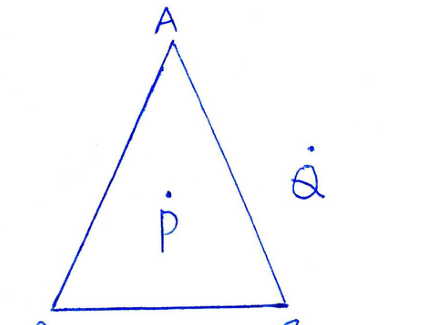Questions and Solutions for NCERT Class 6th Mathematics Chapter 2 Whole Numbers – Exercise 2.1 Solutions, Detailed Solutions for NCERT Class 6th Mathematics Chapter 2 Whole Numbers – Exercise 2.1, Questions and Solutions for NCERT Class 6 Mathematics Chapter 2 Whole Numbers – Exercise 2.1, Stepwise Solutions for NCERT Class 6 Mathematics Exercise 2.1, Solutions for NCERT Class 6 Mathematics Chapter 2, Stepwise and detailed solutions for NCERT Class 6 Chapter 2 Exercise 2.1, Detailed Solutions for Solutions for NCERT Class 6 Mathematics, NCERT Class 6th Mathematics Chapter 2 Whole Numbers – Exercise 2.1, Class 6th Maths solutions wikipedia, Questions and Answers for NCERT Mathematics Class 6, Questions and Solutions for NCERT Mathematics Class Sixth Exercise 2.1 of Chapter 2, CBSE Class sixth Maths Solutions, Chapter 2 Whole Numbers – Exercise 2.1 NCERT Solutions.
Questions and Solutions for NCERT Class 6th Mathematics Chapter 2 Whole Numbers – Exercise 2.1
1. Write the next three natural numbers after 10999.
Ans: We know that the next number can be obtained by adding 1 to the given number
10,999 + 1 = 11,000
11,000 + 1 = 11,001
11,001 + 1 = 11,002
So the three natural numbers after 10,999 are 11,000 , 11,001 , 11,002.
2. Write the three whole numbers occurring just before 10001.
Ans: We know that the previous numbers can be obtained by subtracting 1 from given number
10,001 – 1 = 10,000
10,000 – 1 = 9,999
9,999 – 1 = 9,998
So, the three whole numbers occurring just before 10,001 are 10,000 , 9,999 , 9,998.
3. Which is the smallest whole number?
Ans: Zero ‘0’ is the smallest whole number.
4. How many whole numbers are there between 32 and 53?
Ans: 53 – 32 – 1 = 20
There are 20 whole numbers between 32 and 53.
5. Write the successor of :
(a) 2440701
Ans: Successor of a number is obtained by adding 1 to the number
Successor of 2440701 is 2440701 + 1 = 2440702
(b) 100199
Ans: Successor of a number is obtained by adding 1 to the number
Successor of 100199 is 100199 + 1 = 100200
(c) 1099999
Ans: Successor of a number is obtained by adding 1 to the number
Successor of 1099999 is 1099999 + 1 = 1100000
(d) 2345670
Ans: Successor of a number is obtained by adding 1 to the number
Successor of 2345670 is 2345670 + 1 = 2345671
6. Write the predecessor of :
(a) 94
Ans: Predecessor of a number is obtained by subtracting 1 from the number
Predecessor of 94 is 94 – 1 = 93
(b) 10000
Ans: Predecessor of a number is obtained by subtracting 1 from the number
Predecessor of 10000 is 10000 – 1 = 9999
(c) 208090
Ans: Predecessor of a number is obtained by subtracting 1 from the number
Predecessor of 208090 is 208090 – 1 = 208089
(d) 7654321
Ans: Predecessor of a number is obtained by subtracting 1 from the number
Predecessor of 7654321 is 7654321 – 1 = 7654320
7. In each of the following pairs of numbers, state which whole number is on the left of the other number on the number line. Also write them with the appropriate sign (>, <) between them.
(a) 530, 503
Ans: 530 > 503
503 appear on left side of 530 on the number line.
(b) 370, 307
Ans: 370 > 307
307 appear on left side of 370 on the number line.
(c) 98765, 56789
Ans: 98765 > 56789
56789 appear on left side of 98765 on the number line.
(d) 9830415, 10023001
Ans: 9830415 < 10023001
9830415 appear on left side of 10023001 on the number line.
8. Which of the following statements are true (T) and which are false (F) ?
(a) Zero is the smallest natural number.
Ans: False, because zero is the smallest whole number.
(b) 400 is the predecessor of 399.
Ans; False, because 400 is the successor of 399.
(c) Zero is the smallest whole number.
Ans: True
(d) 600 is the successor of 599.
Ans: True
(e) All natural numbers are whole numbers.
Ans: True
(f ) All whole numbers are natural numbers.
Ans: False, because 0 is not a natural number.
(g) The predecessor of a two digit number is never a single digit number.
Ans: False
(h) 1 is the smallest whole number.
Ans: False
(i) The natural number 1 has no predecessor.
Ans: True
(j) The whole number 1 has no predecessor.
Ans: False
(k) The whole number 13 lies between 11 and 12.
Ans: False
(l) The whole number 0 has no predecessor.
Ans: True
(m) The successor of a two digit number is always a two digit number.
Ans: False

